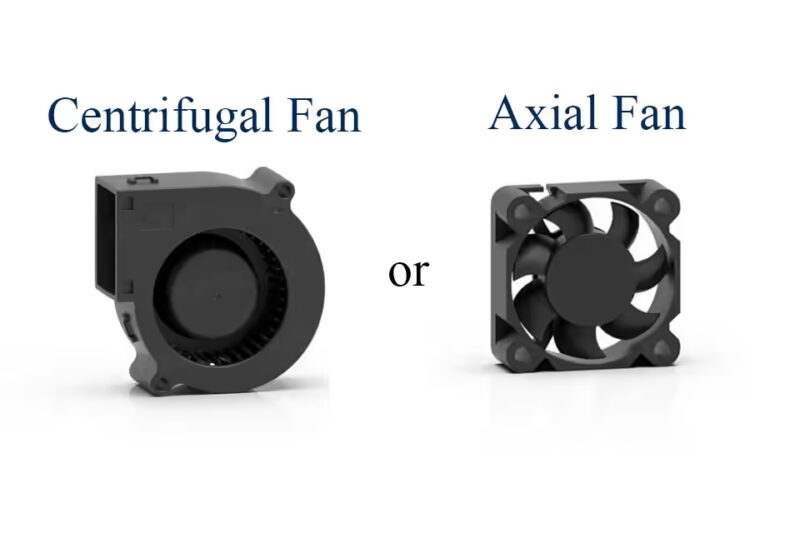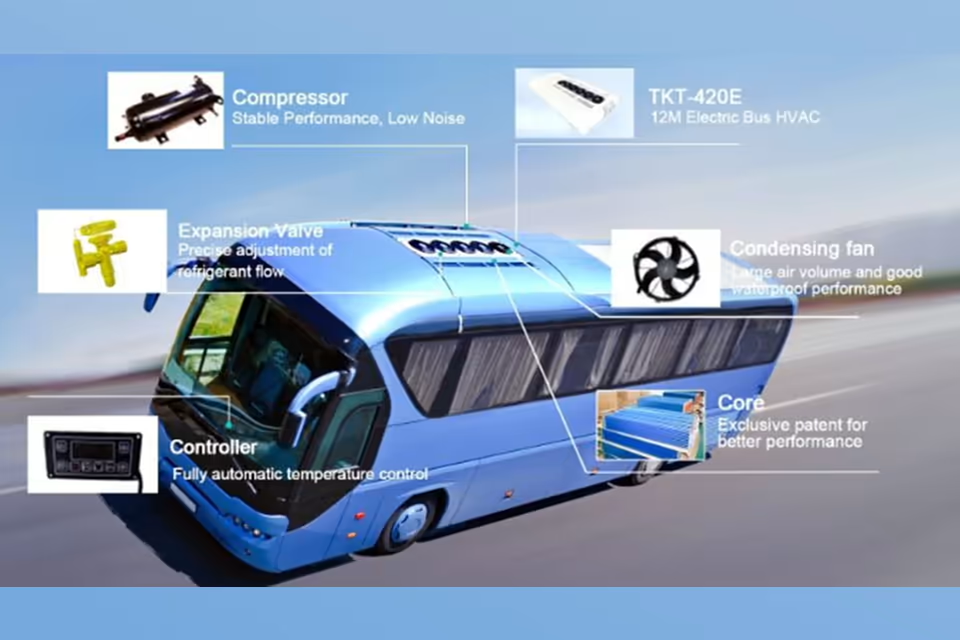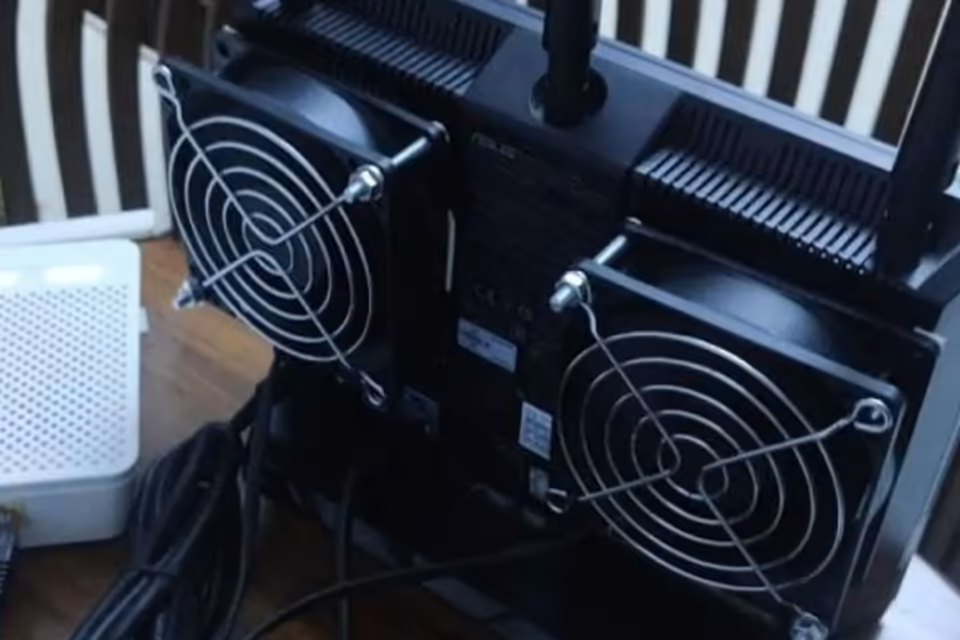산업 및 상업 환경에서 공기와 가스를 이동시키는 데 주로 두 가지 유형의 팬이 사용됩니다: 원심 팬과 축류 팬. 둘 다 환기 및 공기 흐름 관리라는 목적을 수행하지만, 작동 원리가 다르며 각기 다른 용도에 적합합니다.
원심 팬은 방사형 팬이라고도 불리며, 원심력을 사용하여 공기를 이동시키므로 고압 응용 분야에 이상적입니다.
이와 대조적으로, 축류 팬은 프로펠러처럼 작동하여 저압 환경에서 대량의 공기를 이동시킵니다.
둘 중 어떤 것을 선택할지는 공기 흐름, 압력, 효율성을 포함한 특정 시스템 요구 사항에 따라 달라지며, 지속적인 기술 발전이 이들의 기능을 계속해서 형성하고 있습니다.
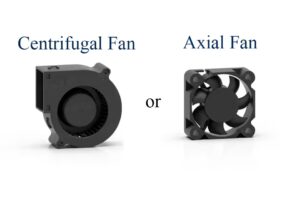
원심 팬: 고압 솔루션
원심 팬은 회전하는 디스크(또는 휠)에 장착된 블레이드를 특징으로 하며, 이 블레이드는 공기를 중앙으로 끌어들여 직각으로 바깥쪽으로 밀어냅니다. 이 작용은 공기의 압력을 증가시키고 스크롤 모양의 하우징을 통해 공기를 보냅니다. 이러한 설계는 원심 팬의 주요 장점인 높은 정압을 생성하는 능력의 핵심입니다.
주요 장점:
- 고압 기능: 이들은 덕트, 필터, 댐퍼의 저항을 극복하는 데 탁월하여 HVAC 시스템 및 산업 환기에 필수적입니다.
- 다용도성: 원심 팬은 집진, 공압 재료 처리, 전자 장치 냉각 등 광범위한 용도에 적합합니다.
- 내구성: 이들의 설계는 모터를 공기 흐름에서 분리하여 고온 또는 미립자 함유 공기를 손상 없이 처리할 수 있도록 합니다.
원심 팬은 저압에서 대량의 공기를 이동시키는 데 사용되는 전향형(forward-curved)과 상당한 시스템 저항이 있는 고압 응용 분야에 매우 효율적인 후향형(backward-curved)과 같은 여러 디자인으로 제공됩니다.
축류 팬: 대용량 공기 이동 장치
축류 팬은 축을 중심으로 회전하는 블레이드를 사용하여 공기를 흡입하고 축과 평행한 동일한 방향으로 배출합니다. 이 방법은 저항이 거의 없는 곳에서 대량의 공기를 이동시키는 데 매우 효과적입니다.
주요 장점:
- 높은 공기 흐름량: 이들은 넓은 공간이나 전자 장비 냉각과 같이 상당한 공기 이동이 필요한 응용 분야에 선호되는 선택입니다.
- 소형 및 공간 효율성: 이들의 날씬한 프로파일은 서버 랙이나 가전제품과 같이 공간이 제한된 장치 및 시스템에 원활하게 통합될 수 있도록 합니다.
- 효율성 및 소음: 축류 팬은 일반적으로 원심 팬보다 에너지를 덜 소비하고 소음 수준이 낮으며, 특히 낮은 작동 속도에서 그렇습니다.
축류 팬의 뛰어난 특징 중 하나는 맞춤화 가능성입니다. 다양한 블레이드 구성, 크기 및 재료로 특정 산업 요구 사항에 맞게 조정할 수 있으며, 직결 구동 모델은 벨트를 제거하여 유지 보수 비용을 절감합니다.

성능 및 효율성 비교
두 가지 팬 유형의 근본적인 차이는 성능 특성에 있습니다. 원심 팬은 고압, 저용량 응용 분야에 적합하게 제작된 반면, 축류 팬은 고용량, 저압 공기 흐름을 위해 설계되었습니다.
Efficiency is a critical factor in fan selection, as it directly impacts operational costs. Overall fan efficiency is determined by both the fan and motor performance.
Factors such as air density, temperature, and humidity can affect a fan’s effectiveness. For optimal performance, the fan’s static pressure capabilities must be matched to the system’s requirements.
Choosing the correct fan type for the application—whether it’s overcoming the high resistance in ductwork or moving large amounts of air in an open space—is crucial for achieving significant energy savings and performance improvements.
Industry Applications
Both fan types play crucial roles across numerous industries.
Centrifugal fans are integral to:
- HVAC Systems: They provide ventilation and maintain indoor air quality in all types of buildings.
- Industrial Processes: They dissipate heat from machinery, control dust, and handle hazardous fumes in manufacturing and chemical processing.
- Data Centers:They are vital for managing heat and ensuring servers operate within optimal temperature ranges.
Axial fans are widely used in:
- Electronics Cooling: Their compact design makes them perfect for cooling densely packed electronics in computers and server racks.
- General Ventilation: They are used for circulating air in large spaces like warehouses and for agricultural purposes such as ventilating barns and greenhouses.
- Manufacturing: They provide cooling in various industrial processes that require high airflow with minimal resistance.
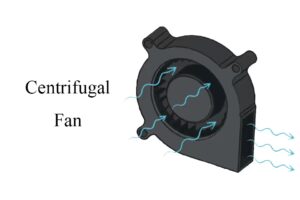
Conclusion
The debate between centrifugal and axial fans is not about which is superior overall, but which is best suited for a specific task. Centrifugal fans are the robust choice for systems with high resistance, while axial fans are the efficient solution for moving large volumes of air freely. As technology advances, both fan types are becoming smarter, more efficient, and more adaptable, ensuring their continued importance in managing airflow across countless applications.

